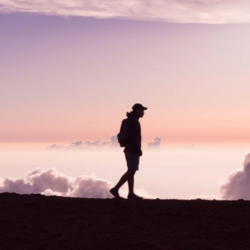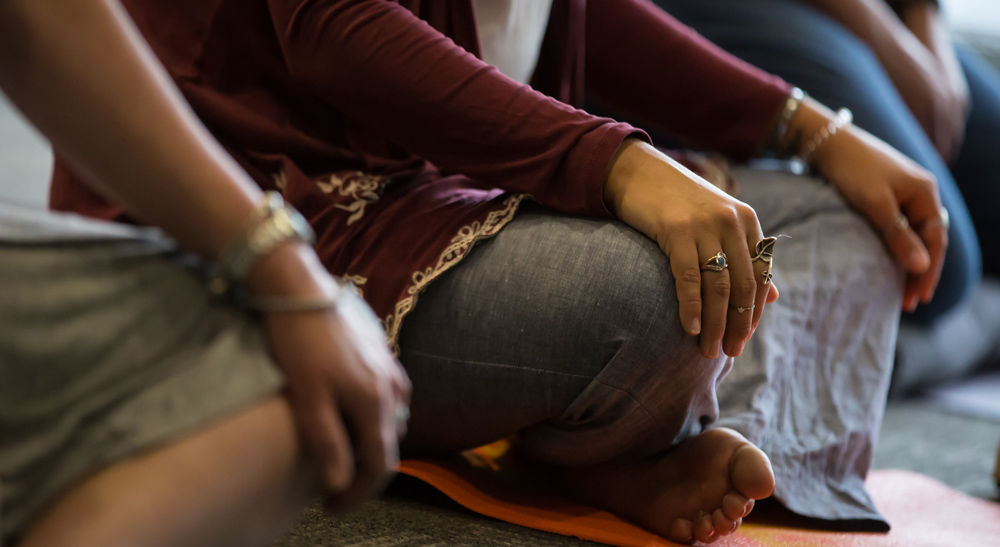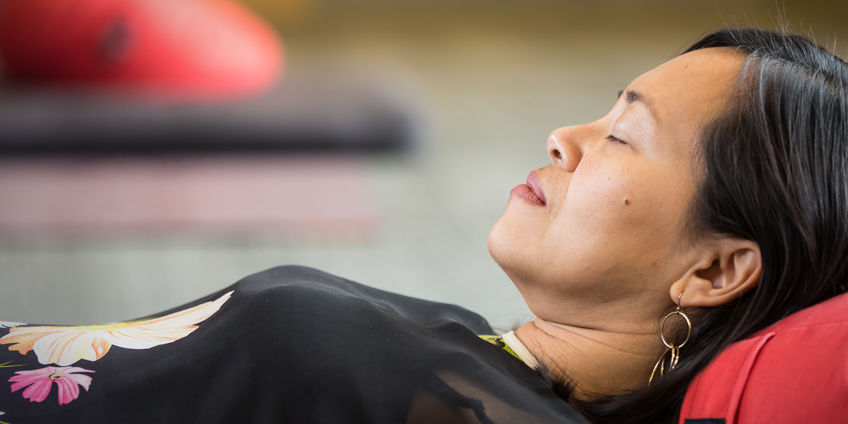Mindfulness in Medicine Toolkit

Click here for a list of resources you and your team can use to practice mindfulness and increase your well-being.
About this practice
How long will this take? 10 minutes.
How do I prepare? This can be done lying down, sitting, or in any position that you can remain in comfortably for around 10 minutes.
How should I feel? Given how sleep deprived many of us seem to be, it is possible to become relaxed or sleepy during the body scan. This is normal. You can decide to keep your eyes open, or you may close your eyes. Whatever makes you feel most comfortable and supportive, allowing you to remain alert.
Tune in: Listen to your body
he body continuously provides rich information on what we are experiencing internally and externally, be it early signs of stress or intuitive wisdom. The body scan is a practice to help us tune in and listen. This practice also tends to help us relax the body and thus, can be helpful with sleep.
The following two podcasts are guided meditations designed to help you fit mindfulness into a busy schedule. Download (or just hit play) whenever you find the time or feel the need to unwind.
Please note: If at any time you experience moderate to high levels of discomfort or emotional and/or physical distress, please stop and consult with a qualified or certified mindfulness teacher, mental health provider, or medical practitioner.
Not sure what to expect? Annotated transcript from Rob Davies' Body Scan meditation below.
Walking meditation

Click here for a guide to "walking meditation”—a focused awareness on the physical experience of walking.
Where to begin
Notice the position and weight of your body for a few seconds. Now, if you will, tune in to how it feels to breathe in this moment. Allow yourself to feel the breath coming and going. There’s no need to change or control the breath in any way. Just notice where the breath is felt in your body. Now, as best you’re able in this moment, bring a sense of ease and wakefulness to the body. When you notice the mind wandering, as it naturally will, gently bring it back to the body and the guidance of this instruction.
On the next breath, direct your attention all the way down through your body to the soles of both feet. Become aware of the feet—right and left—the toes, the space between the toes, the soles of your feet, the sides of the feet, and the tops of both feet. Notice any sensations that might be present in your feet: warmth, coolness, pressure, tingling. You might also not notice any sensations at all; that’s OK, too. In that case, just notice what it feels like to not have sensations in your feet.
Direct your attention to your legs, both right and left. Notice any feelings that you might be aware of in your legs—perhaps heaviness or lightness. Allow your attention to explore any sensations in this part of the body, observing sensations that are both deep and on the surface. If you notice your mind wandering, gently and non-judgmentally bring your attention back to the body.
Notice the hips and pelvis, along with any sensations in this area. Perhaps notice the weight of the body against the floor or the chair.
Direct your full attention to the lower back, gently observing any sensations—strong, mild, or even none at all—that may be present for you in this moment. You might even invite a softening of the lower back.
Moving your attention up the back and all the way up the spine, be aware of the skin, muscles, and vertebrae of the back.
Letting your attention now move to your belly, you might notice the rise and the fall of the abdomen with each breath. There might be a sense of fullness or emptiness. Just notice what is present, without judgment.
The Four Elements Meditation

Click here to learn about how this meditation provides a different lens through which to examine both the external and internal world—all that exists outside our bodies and within our bodies.

Move awareness to the chest and movement of the chest, along with the area of the heart and lungs.
Let your awareness move down the arms and into the fingers of both hands. Direct attention to any sensation that may be present in the fingers or hands: pulsations, warmth, coolness, tingling, dryness, or even no sensation. Just be present with whatever the experiences of your fingers and hands are in this moment.
Moving your attention up the arms and next to the lower arms and upper arms, allow awareness to settle in your shoulders. This is another area where we often hold tension. Perhaps invite the shoulders to soften, letting go of any tension.
Directing awareness now to the head and face, notice the jaw, mouth, cheeks, nose, eyes, back of the head, forehead, and top of the head.
Open awareness to the whole body, noticing how the body is in this moment. Turning to the breath again, notice how the breath moves freely, from the feet through the entire length of the body to the top of your head. Inhaling and exhaling, allow the body to remain at ease, each breath bringing vitality into your body.
Now, take a moment to acknowledge the efforts of your practice and send gratitude to your body for all the work it does on your behalf. See if you can send appreciation to every cell of your body. Coming back into the room, notice again the sounds that you can hear. As you’re ready, open the eyes and continue on with your day with more awareness and appreciation for your body.
Rob Davies
Heidi O'Donoghue
GME Wellness Director Rob Davies explores the practice of gratitude journaling—writing down “three good things” every day for two weeks. This simple exercise can profoundly impact your overall sense of wellbeing.
When life gets busy, it’s easy to forget what keeps us grounded and therefore more satisfied with life. Sydney Ryan reflects on the importance of making time for yourself and prioritizing what is important for you. She explains simple, deliberate actions that have made a difference in her work and her life.
Health care is complicated, emotionally challenging work. Thriving in complexity requires two things: continuous system improvement and building individual resilience. This article focuses on three ways we can build habits that support individual resilience from three experts who do it every day.
